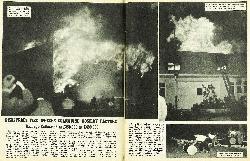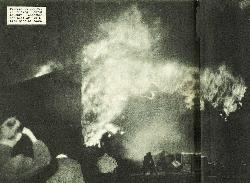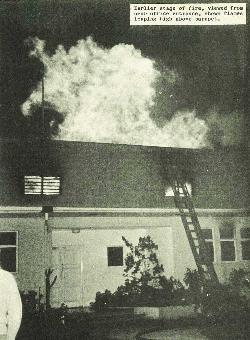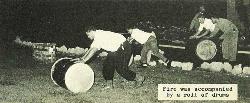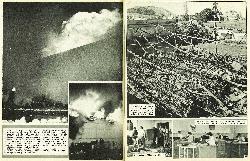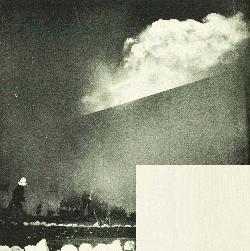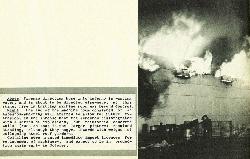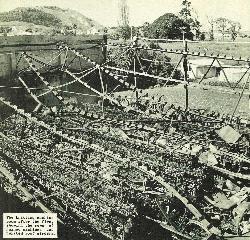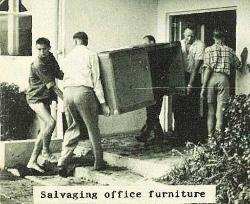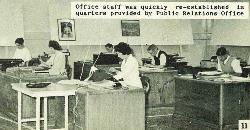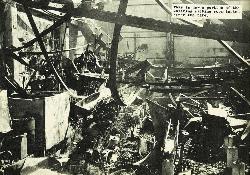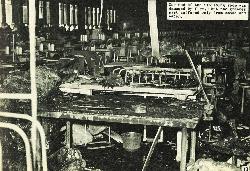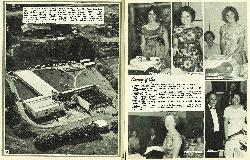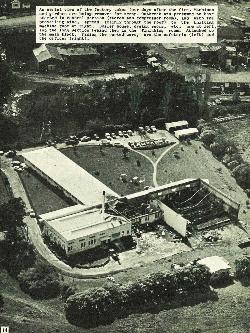8
Disastrous Fire Wrecks Columbine Hosiery Factory
Damage Estimated at £350,000 to £400,000
It was just another Saturday night. About 8 o'clock, hundreds of people settled into their seats at the cinema to watch the picture of their choice. In the new Y.M.C.A., the Saturday night programme of a Youth Rally was getting under way. A couple of blocks away, a director of Columbine Hosiery Ltd., Mr Alan Thorpe, locked the door behind him as he left the premises after a visit to the office, climbed into his car, and drove off.
At five minutes to nine, a resident in nearby Kahutia Street noticed a thin curl of smoke coming from the vicinity of the factory. He dismissed it as a rubbish fire. Ten minutes later, the smoke had grown in volume and was clearly visible from Kaiti. About this time, a nearby resident realised what was happening, rushed along to a neighbour in Disraeli Street who was on the telephone, and had them dial 111 for the fire brigade. It was then 9.14 p.m.
The sirens screamed and fire engines raced to the spot. But it was already too late. The fire, which had plainly been burning for some time, was already too big to control. It had spread into the knitting machine room and quickly developed into a sea of flame which forced firemen back and turned water from their hoses into steam before their eyes. The most the brigade could do was to save what they could.
Fireman is dwarfed as flames burst through asbestos end-wall of knitting machine room.
9
With five engines on the job, including one called in from Manutuke, the brigade managed to prevent the holocaust from spreading, and although they were damaged by smoke and water the finishing rooms, cafeteria, and offices were preserved more or less intact. The boiler room lost its roof, but was not seriously damaged otherwise.
The knitting machine room, containing machines valued at over £200,000, and a room containing the air conditioning plant, were completely gutted. It was the costliest fire in the history of Glsborne.
10
Fireman directing hose into inferno is wasting water, and is about to be directed elsewhere. At this stage, fire in knitting machine room was beyond control.
One end of the machine room consisted of an asbestos-sheeting wall erected to allow for future extension, In the intense heat the asbestos disintegrated with a series of explosions, but reinforced concrete walls (such as that in the larger picture) remained standing, although they sagged inwards with weight of collapsing steel roof girders.
Columbine were granted immediate import licences for replacement of machinery, and expect to be in production again early in October.
11
12
13
One end of the finishing room was damaged by fire, but the greater part suffered only from smoke and water.
14
An aerial view of the factory taken four days after the fire. Machines and girders are being removed for scrap. Outbreak was presumed to have started in central section (stores and compressor room), and with the prevailing wind, spread (mainly through the roof) to the knitting machine room at right. Boiler house, dyeing rooms, etc. are at left, and the long section behind them is the finishing room. Attached to the main block, facing the parked cars, are the cafeteria (left) and the offices (right).


